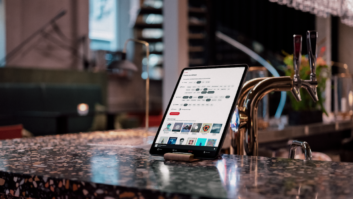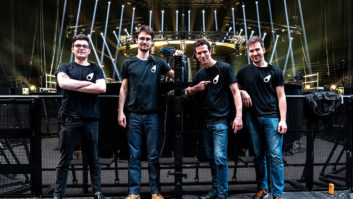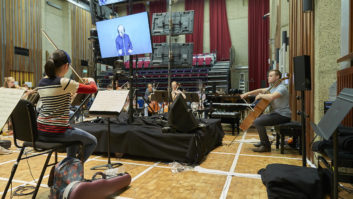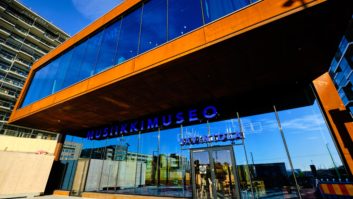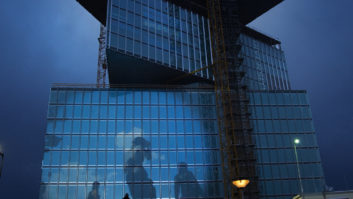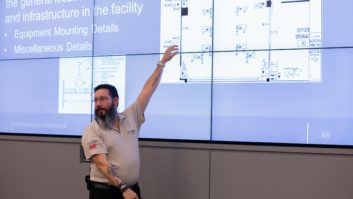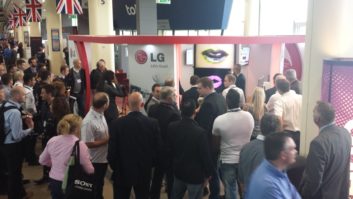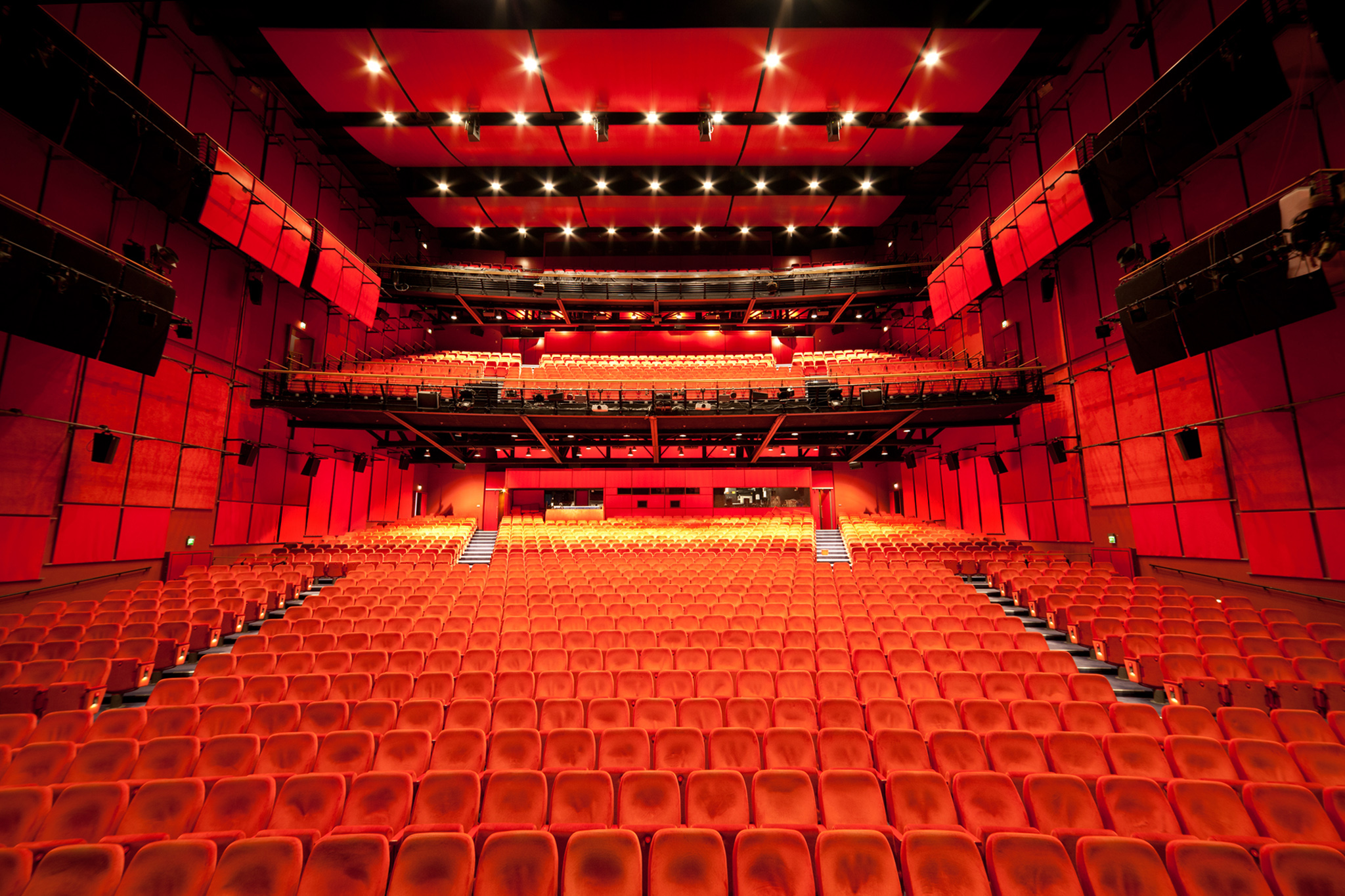
In the first half of this feature we considered whether 3D audio is poised for a mainstream breakthrough, here Tim Frost looks at the markets where the technology has potential.
Signal processing and multiple speakers are a common feature for both immersive and architectural acoustic processing. So a venue looking at a fresh install that would be going down the architectural audio route anyway, could consider going to a full immersive installation. Using upgraded speakers and the additional processor module may be considered worth the incremental investment.
Meyer Sound’s Constellation is a strong product in this area, so the company’s applications director of digital products, Steve Ellison, sees adding immersive as a serious option. “Constellation allows you to change the acoustics, transforming the space acoustically. But then you can use the same speakers and system for a multi-channel audio playback that is really exciting. That is the cutting edge where a venue uses the system for both acoustics and as a multi-channel system.”
Bjorn Van Munster, director of Astro Spatial Audio has the same approach: “We have a room acoustic module based on object audio as well, and as the system is modular, you can have the installation with your choice of modules: 3D audio, live room acoustics and a tracking system in one package.”
Alcons Audio’s managing director, Tom Back, comments: “With Alcons’ Astra there have been many electroacoustic processing developments both in improving placement and enhancement. So if you create a toolbox that offers object-oriented sound and immersive with enhanced acoustics tools, it makes life easier as an integrated product.”
Tracking
Van Munster mentioned tracking, which is one of the new creative options that immersive provides. Motion capture has spawned sensor systems that can dynamically track an actor and their movements. Although more frequently encountered in the worlds of film, TV and games, tracker systems – such as Timax from Out Board – are in use in live performances. A small tracker in the actor’s pocket sends positioning information back to the sound system, which dynamically moves the sound to match their position. It is these sorts of effects that excite the sound designers who will hopefully demand playback systems that can deliver them.
This is what most see as the driving force behind immersive installations: the creative community and sound engineers who see (and hear) it in action and then want to use immersive for their own shows and installations.
Back comments: “For the live sound we are looking to the theatre sound designers for musicals and things like that. For live, it’s the sound engineers who are using touring systems – the more forward-thinking engineers. “
Sennheiser is encouraging this with an education programme, says senior manager research & innovation, Gregor Zielinsky. “We are doing demonstrations and training for 3D to show people how to handle it. There are a lot of people out there who are deeply interested in 3D but need to find out how it works.”
High-end audiophile and home theatre installations are also a niche market for some. Mathias Johansson, founder/CEO of Dirac, which is doing major development work on immersive processing for VR, headphones and tablets, offers its Live Room Correction Suite for these markets.
He notes that getting any system fully optimised is a must for immersive performance: “Positioning is about level and time difference and more complicated factors, so we deal not only with the EQ but also the early reflections.” Dirac’s focus on the consumer end does show the directions that the cost and flexibility of all this immersive processing are taking. “The [DSP] engine interfaces with various types of sound sources. So it is just there in the middle and makes any [immersive] source usable for us.” Dirac’s processes are implemented on DSP and ARM processors, which aim at lower costs: “We will be able to implement it on really inexpensive chips, even on Bluetooth headphones.”
Markets
The big question is: which markets will immersive move into? Unsurprisingly, our interviewees generally see developments in the markets they are most experienced in.
Van Munster comments: “We see a lot of different opportunities in theatre and live markets, such as exhibitions and events such as car launches and it can be fixed or temporary installations.”
Cremering at Sennheiser says: “We see huge potential for exhibitions, so we see a lot of future in live events – that is the logical next step.”
Back sees take-up for multi-purpose installs. Alcons has recently installed a system in the Potsdamer Platz Theatre in Berlin, initially for its two-week film festival. “The rest of the year it can be used for music theatre. So they are looking at the creative process where content people can discover the possibilities of immersive experience for theatre.”
Finally, Yamaha’s systems marketing manager, Ron Bakker sums up the real potential in eight words: “Any entertainment event can benefit from 3D audio!”
Case study: Ministry of Sound goes immersive
London’s Ministry of Sound worked with Dolby Atmos to add immersive sound to the club, in a project that proved to be an early foray for Dolby into the live sound business.
The system, installed last year, features 60 Martin Audio speakers and 22 output channels and uses tracks specifically created for the installation as Atmos sources. An aspect of this is controlled live by the DJ, who uses a controller to move sound objects around the club with simple use of a joystick.
“This allows them a more immersive experience,” says Dolby’s technical marketing manager, Nick Watson. “It is operated and controlled live like any other set, with some elements created in advance and some done live.” The processing is done through a Dolby cinema processor, with a dedicated Atmos DJ interface to control the available sound objects from the mix.
“The challenge has been to come up with tools that would be easy to use and need a very short learning curve,” comments Watson.
www.alconsaudio.com
www.astroaudio.eu
www.dolby.com
www.martinaudio.com
www.meyersound.com
www.outboard.co.uk
www.sennheiser.com
www.yamahaproaudio.com

